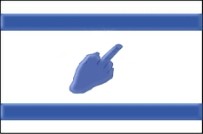Saeb Erekat, the chief Palestinian negotiator, The New York Times, october 1, 2010:
“Our position is clear — the whole settlement activity has to stop to give direct negotiations the chance that they deserve,”
So, the PA had no choice but withdraw from direct talks, because of the dreaded settlement activity.
Haaretz, november 3, 2011:
Erekat stated furthermore that despite Israel’s continual policy of “occupation and settlement building,” an aerial photograph provided by European sources shows that settlements have been built on approximately 1.1% of the West Bank, thus legitimizing the Palestinian demand for a withdrawal to borders based on the June 4, 1967 borders.
However...once the PA walked out of direct negotiations the same dreaded activity magically became negligible. Wow.
From Abbas' UN speech:
"Thus, we agreed to establish the State of Palestine on only 22% of the territory of historical Palestine - on all the Palestinian Territory occupied by Israel in 1967."
Err...that must be why they never agreed to Olmert's offer of exactly that (see the Haaretz article quoted above).
PA TV (Fatah), Nov. 1 and Sept. 5, 2011:
"The West Bank and Gaza have another section in Palestine which is the Palestinian coast that spreads along the [Mediterranean] sea, from ...Ashkelon in the south, until Haifa, in the Carmel Mountains. Haifa is a well-known Palestinian port. [Haifa] enjoyed a high status among Arabs and Palestinians especially before it fell to the occupation [Israel] in 1948. To its north, we find Acre. East of Acre, we reach a city with history and importance, the city of Tiberias, near a famous lake, the Sea of Galilee. Jaffa, an ancient coastal city, is the bride of the sea, and Palestine's gateway to the world."
22%, is it?
Just sayin'.
If the video doesn't work, watch it here.


6 comments:
You see that 22% figure constantly. I don't know if it is accurate, but what Palestinians would receive in a 2-state solution is generally assumed not to include the Negev desert, which Israel got in the original partition plan. After a 2-state solution was implemented, the Pals would obviously have much more than 22% of the arable land, and much more than 22% of the land with a significant population. And what percentage of Israel would then be desert?
I like the goat better, with or without the monkey.
As I see it, the PA already has most of the land it wants. We'll have to swap only slightly above 1% for the settlements. Assuming, of course, that a final agreement will be reached. Right now, such an agreement seems so far away, Sahara will become arable land by then.
Well, the monkey is on top.
Yes Snoopy, when peace comes between Israelis and Palestinians, it will be just like the goat balancing on the can on the wire with the monkey balancing on the goat's back.
Thanks for the video, it is great!
That's Pisa not Snoopy, but the video and the post are great, I agree.
Post a Comment